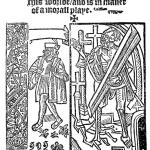It’s the story of the contemporary heroin epidemic nationwide, especially in small cities and towns that had never known the presence of heroin until now. What it’s really about, though, is a culture that opened the door for this catastrophe, in complicated but all too familiar ways.
The suppliers are not, as you might have thought, ruthless members of Mexican drug gangs, but a sprawling network of farm boys from the tiny Mexican state of Nayarit — and specifically, from one town, Xalisco (pron. ha-LEES-co). They got tired of doing extremely hard work raising sugarcane, and being dirt poor and looked down on by Mexican society. Indians in the nearby mountains grew poppies. The townspeople learned how to process it into a thick, dark goo that looked like Tootsie Rolls. And through marketing and distribution genius, people in the town developed a system for getting this “black tar heroin” into parts of America that the conventional drug gangs had overlooked. They figured out how to tap family and friend networks from Xalisco, and mobile phone technology, to set up a hard-to-police system of reliable local dealers who distributed heroin like pizza.
No guns, no threat of violence. The dealer comes to you. Customer service is the No. 1 priority. It’s a diabolical scheme, but looked at from a pure business perspective, a brilliant one.
How did the “Xalisco Boys,” as Quinones calls them, pull it off? They only used people from back home that they could trust. They insisted that nobody involved in selling could use the drug — and in fact, there was a taboo back home against it. All the local dealers were salaried, so there was no incentive to cut the drug. They provided consistent quality, which earned customer loyalty. They would not use guns, and avoided violence to keep the cops from noticing. In fact, they had a rule against selling heroin to black customers, on the belief that blacks are likely to be violent in drug deals. They kept their client base restricted to whites. Maintaining these disciplines helped their business expand tremendously.
And the Xalisco Boys tracked where prescription opiate use — OxyContin, mostly — was big, and moved into those markets. Oxy is expensive, but once people are hooked, they’ll do anything for the pill. Black tar heroin — chiva, they call it — gives the same kind of high as Oxy, only more intense, and at a much lower price. Every OxyContin addict was a potential chiva customer. And there were a lot of Oxy addicts. . . .
The most fascinating part of Dreamland is how Quinones examines the cultural roots of the opiate epidemic. He writes:
In heroin addicts, I had seen the debasement that comes from the loss of free will and enslavement to what amounts to an idea: permanent pleasure, numbness, and the avoidance of pain. But man’s decay has always begun as soon as he has it all, and is free of friction, pain, and the deprivation that temper his behavior.
[Keep reading. . .]















